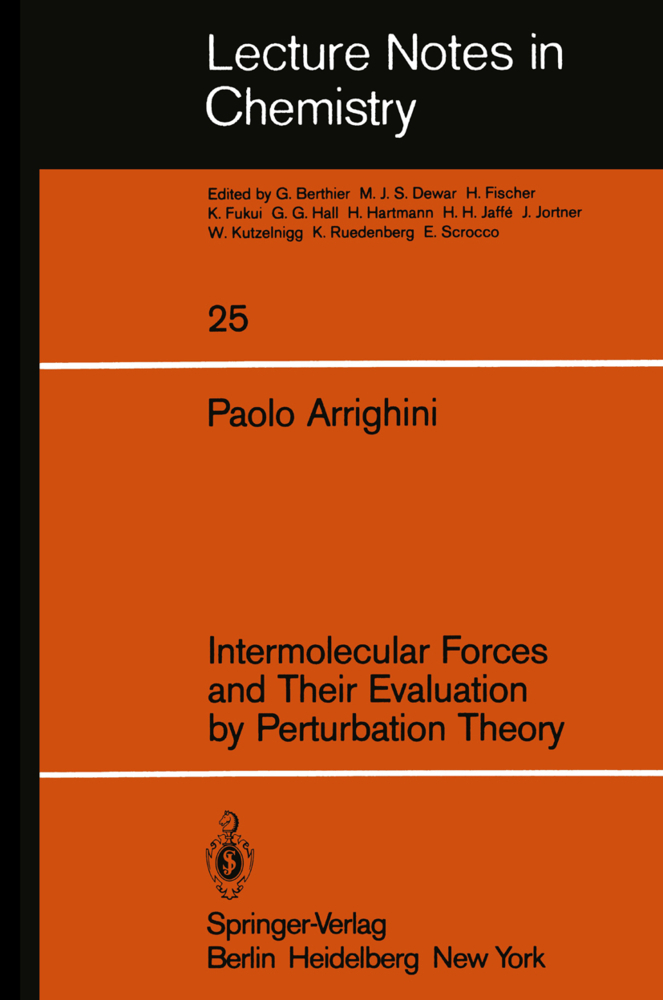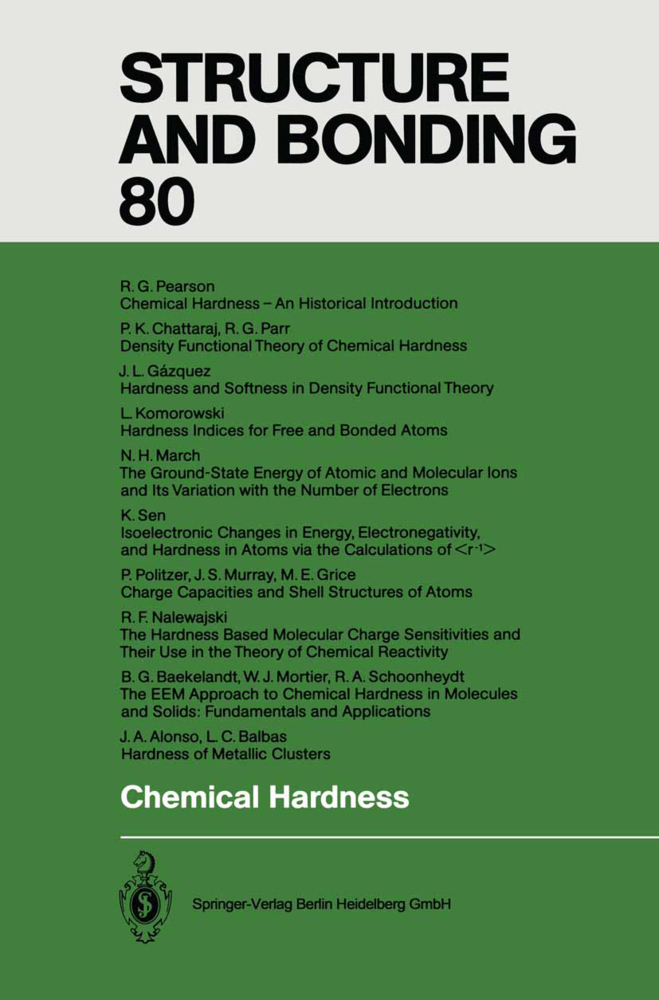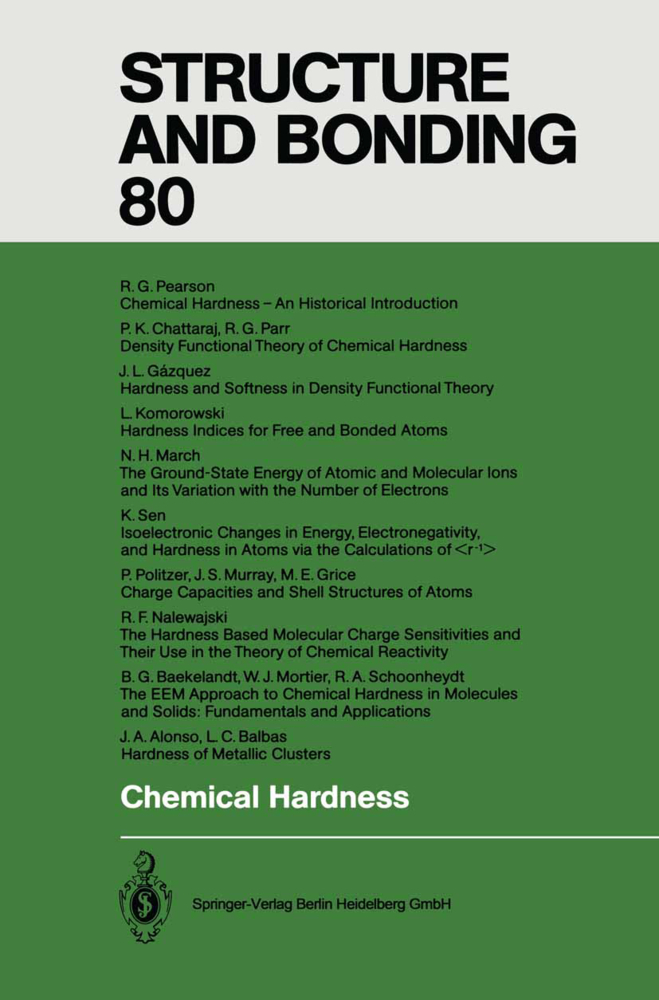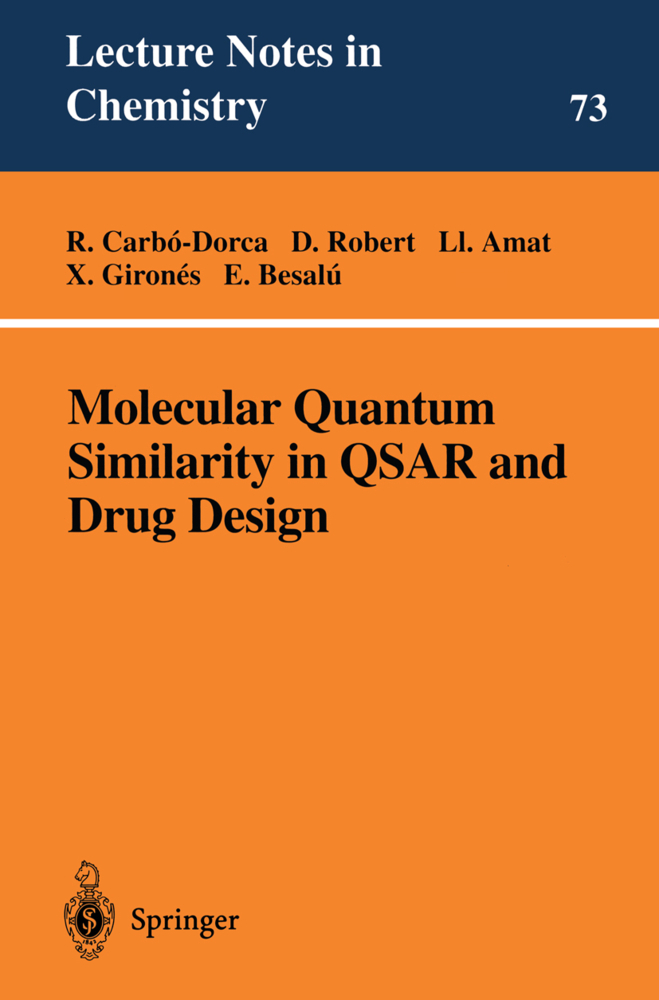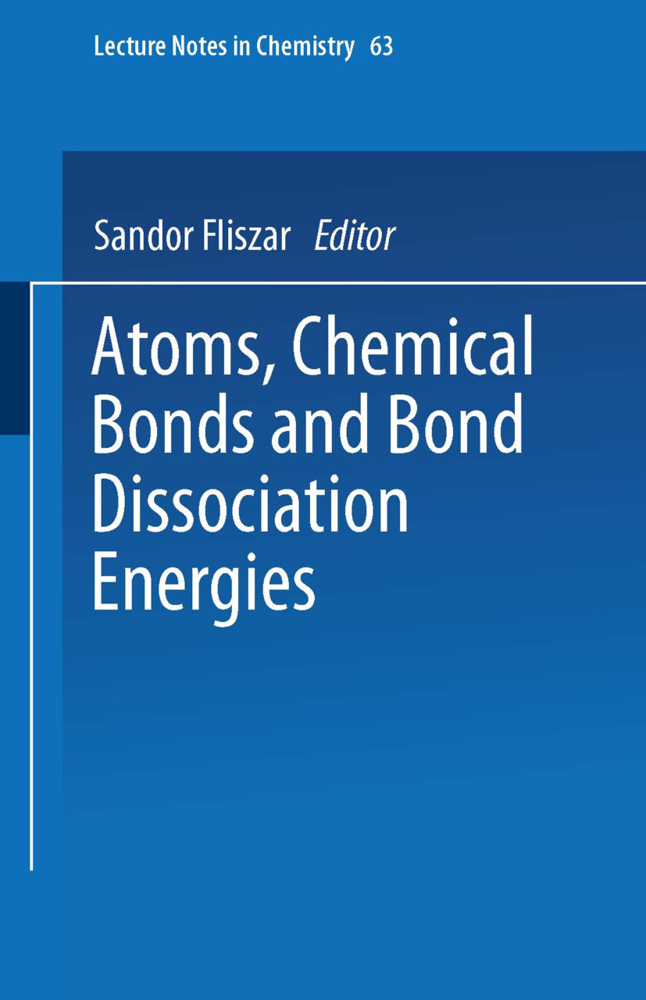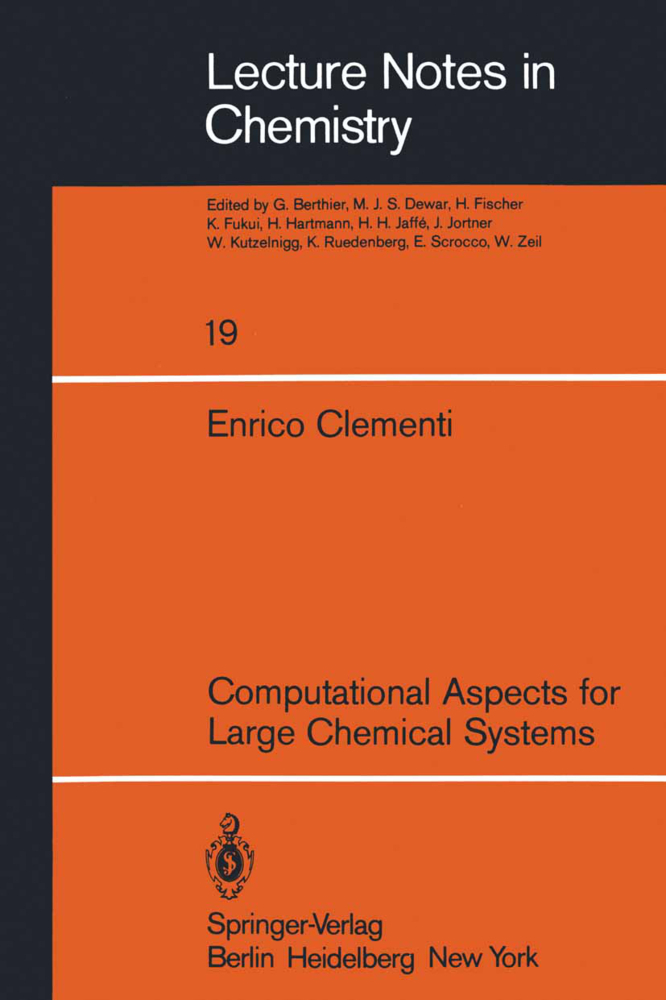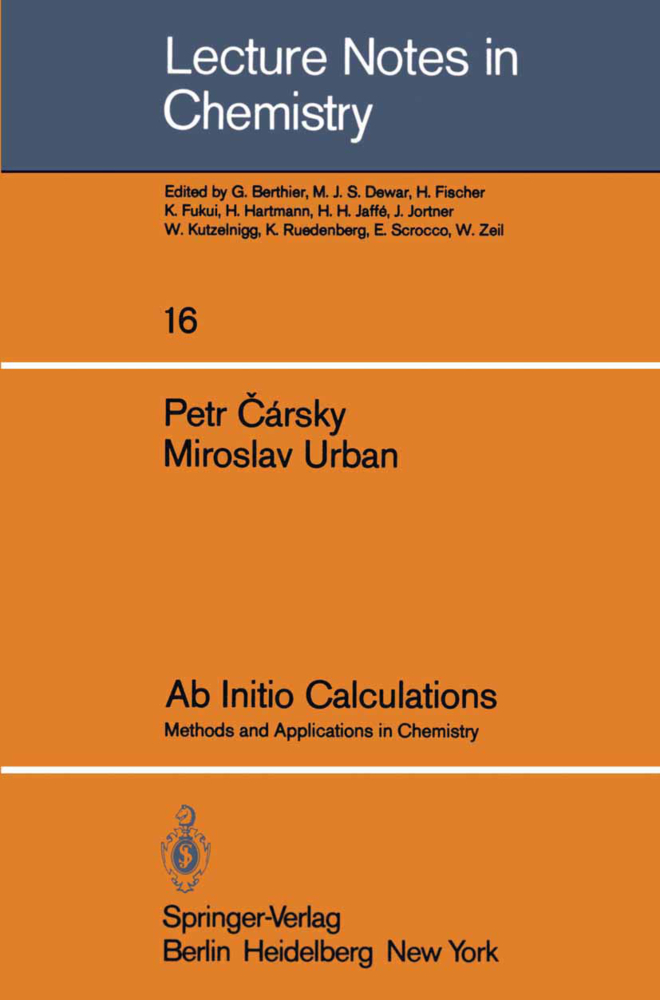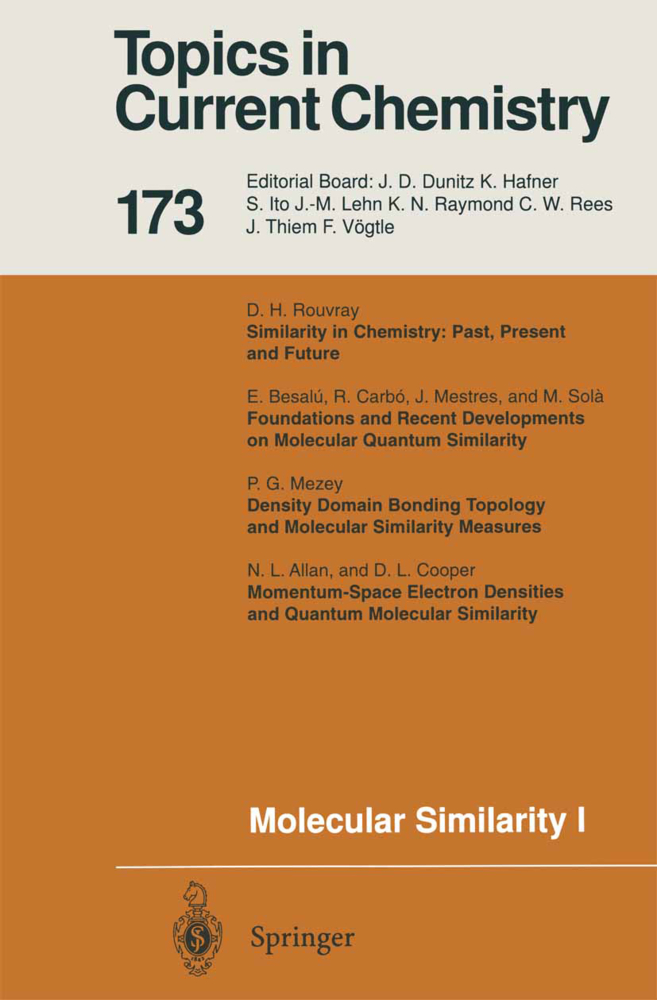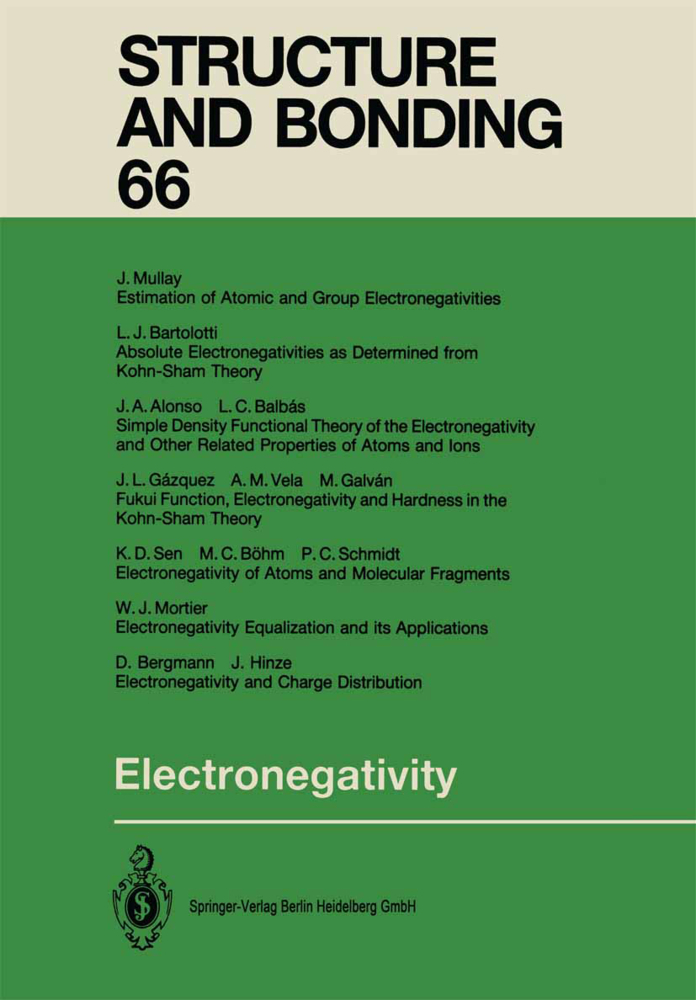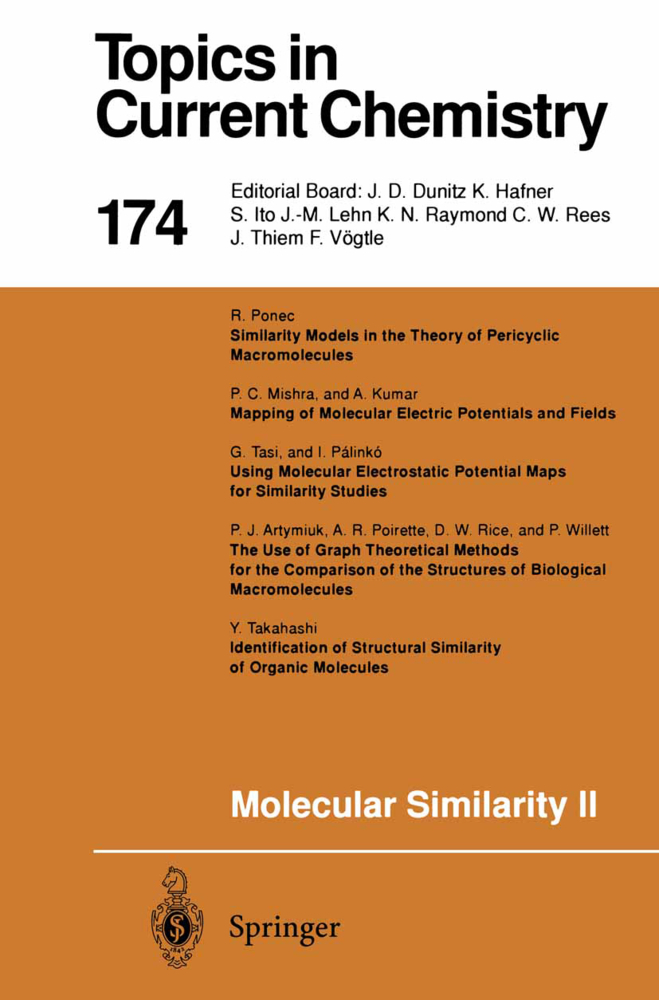Intermolecular Forces and Their Evaluation by Perturbation Theory
Intermolecular Forces and Their Evaluation by Perturbation Theory
The aim of these notes is to offer a modern picture of the pertur bative approach to the calculation of intermolecular forces. The point of view taken is that a perturbative series truncated at a low order can provide a valuable way for ~valuating interaction energies, especial ly if one limits oneself to the case of intermediate- and long-range distances between the interacting partners. Although the situation corresponding to short distances is essen tially left out from our presentation, the problems which are within the range of the theory form a vast and important class: a large var iety of phenomena of matter, in fact, depends on the existence of in teractions among atoms or molecules, which over a substantial range of distances should be classified as weak in comparison to the interactions occurring inside atoms or molecules. We are aware of the omission of some topics, which in principle could have been included in our review. For instance, a very scarce at tention has been paid to the analysis of problems involving interacting partners in degenerate states, which is of particular relevance in the case of interactions between excited atoms (only a rather quick presen tation of the formal apparatus of degenerate perturbation theory is in cluded in Chap. III). Interactions involving the simultaneous presence of more than two atoms (or mOlecules) have not been considered, with the consequent non-necessity of considering nonadditive effects which characterize the general N-body problem.
11.1. Constants of Motion and Projectors
11.2. A Review of Group Theory Concepts
11.3. A Look to the Symmetric Group
11.4. Pauli Principle Implications
11.5. Induced and Subduced Representations
III. Symmetry-Adapted Perturbation Theory: A General Approach
III.1. Eigenvalue Problems and Partitioning Technique
III.2. Constants of Motion in the Partitioning Technique
III.3. Connection between Partitioning Technique and Perturbation Theory
III.4. The Murrell-Shaw, Musher-Amos and Eisenschitz-London, Hirschfelder-Van der Avoird Formalisms
III.5. Multidimensional Partitioning Technique and Degenerate Perturbation Theory
III.6. Upper and Lower Bounds in Second-Order Perturbation Theory by Inner Projection Technique
IV. Why Symmetry-Adapted Perturbation Theories are Needed?
IV.1. "Polarization Approximation": Some Hints to its Possible Inadequacy for Intermolecular Interactions
IV.2. Is the "Polarization Approximation" a Convergent Perturbative Procedure?
IV.3. "Polarization Approximation" and its Inadequacy for Evaluating Intermolecular Interactions: Claverie's Analysis
V. Symmetry-Adapted Perturbation Theories at Low Orders: From H2+ to the General Case
V.1. The Interaction H...H+ as a Test for Symmetry-Adapted Perturbation Theories
V.2. Some Useful Concepts Arising from an Analysis of the Interaction H...,H+
V.3. A Basic Partition of the Interaction Energy Through the Second-Order for Many-Electron Subsystems
V.4, Many-Electron Systems: the Problems Posed by Our Ignorance of Exact Unperturbed Eigenstates
VI. The Calculation of the 1-St Order Interaction Energy
VI.1. Coulombic Contribution to the 1-st Order Interaction Energy: a UsefulExpression in Terms of the Charge Density Matrix
VI.2. The Evaluation of the Coulombic Energy
VI.3. Coulombic Interaction Energy in the Approximation of Neglecting Overlap Effects
VI.4. An Assessment of the Importance of Charge Overlap Effects
VI.5. The Exchange Contribution to the 1-st Order Interaction Energy: an Approximate Evaluation
VI.6. Dependence of the First-Order Energy on the Wave-function Quality
VII. The Second-order Contribution to the Interaction Energy
VII.1. Second-order Polarization Energy in the Approximation of Neglecting Charge Overlap Effects
VII.2. Induction and Dispersion Coefficients for Two Interacting Linear Molecules
VII.3. Induction Energy Coefficients and Static Polarizabilities of Molecules: Two Problems in One
VII.4. The Evaluation of the Dispersion Energy Coefficients
VII.5. Determination of Upper and Lower Bounds to Dispersion Energy Coefficients
VII.6. Nonexpanded Form of the 2-nd Order Polarization Energy
VII.7. Approximate Evaluation of Exchange Polarization Effects
VIII. Epilogue
*Appendix A
*Appendix B
*Appendix C
*Appendix D
*References.
I. Introduction
II. Symmetry: An Excursion through its Formal Apparatus11.1. Constants of Motion and Projectors
11.2. A Review of Group Theory Concepts
11.3. A Look to the Symmetric Group
11.4. Pauli Principle Implications
11.5. Induced and Subduced Representations
III. Symmetry-Adapted Perturbation Theory: A General Approach
III.1. Eigenvalue Problems and Partitioning Technique
III.2. Constants of Motion in the Partitioning Technique
III.3. Connection between Partitioning Technique and Perturbation Theory
III.4. The Murrell-Shaw, Musher-Amos and Eisenschitz-London, Hirschfelder-Van der Avoird Formalisms
III.5. Multidimensional Partitioning Technique and Degenerate Perturbation Theory
III.6. Upper and Lower Bounds in Second-Order Perturbation Theory by Inner Projection Technique
IV. Why Symmetry-Adapted Perturbation Theories are Needed?
IV.1. "Polarization Approximation": Some Hints to its Possible Inadequacy for Intermolecular Interactions
IV.2. Is the "Polarization Approximation" a Convergent Perturbative Procedure?
IV.3. "Polarization Approximation" and its Inadequacy for Evaluating Intermolecular Interactions: Claverie's Analysis
V. Symmetry-Adapted Perturbation Theories at Low Orders: From H2+ to the General Case
V.1. The Interaction H...H+ as a Test for Symmetry-Adapted Perturbation Theories
V.2. Some Useful Concepts Arising from an Analysis of the Interaction H...,H+
V.3. A Basic Partition of the Interaction Energy Through the Second-Order for Many-Electron Subsystems
V.4, Many-Electron Systems: the Problems Posed by Our Ignorance of Exact Unperturbed Eigenstates
VI. The Calculation of the 1-St Order Interaction Energy
VI.1. Coulombic Contribution to the 1-st Order Interaction Energy: a UsefulExpression in Terms of the Charge Density Matrix
VI.2. The Evaluation of the Coulombic Energy
VI.3. Coulombic Interaction Energy in the Approximation of Neglecting Overlap Effects
VI.4. An Assessment of the Importance of Charge Overlap Effects
VI.5. The Exchange Contribution to the 1-st Order Interaction Energy: an Approximate Evaluation
VI.6. Dependence of the First-Order Energy on the Wave-function Quality
VII. The Second-order Contribution to the Interaction Energy
VII.1. Second-order Polarization Energy in the Approximation of Neglecting Charge Overlap Effects
VII.2. Induction and Dispersion Coefficients for Two Interacting Linear Molecules
VII.3. Induction Energy Coefficients and Static Polarizabilities of Molecules: Two Problems in One
VII.4. The Evaluation of the Dispersion Energy Coefficients
VII.5. Determination of Upper and Lower Bounds to Dispersion Energy Coefficients
VII.6. Nonexpanded Form of the 2-nd Order Polarization Energy
VII.7. Approximate Evaluation of Exchange Polarization Effects
VIII. Epilogue
*Appendix A
*Appendix B
*Appendix C
*Appendix D
*References.
Arrighini, P.
| ISBN | 978-3-540-10866-5 |
|---|---|
| Artikelnummer | 9783540108665 |
| Medientyp | Buch |
| Copyrightjahr | 1981 |
| Verlag | Springer, Berlin |
| Umfang | IX, 243 Seiten |
| Abbildungen | IX, 243 p. |
| Sprache | Englisch |

